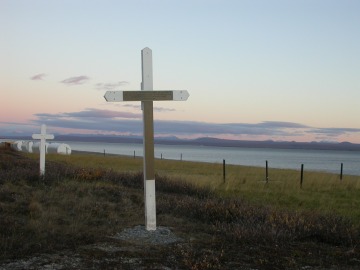2005: Iñupiat cooperation leads to Spanish Flu discoveries
Iñupiat elders at Brevig Mission, Alaska, allow the retired pathologist Johan Hultin to obtain an important sample of human lung tissue, with which researchers are able to study the gene structures in the deadly 1918 Spanish Influenza virus. The epidemic killed all but eight of the residents of Brevig Mission. Researchers study how subtle changes in the genetic structure allowed the virus to move from birds to humans, with devastating effects.
Though Johan Hultin’s own research into the virus that caused the 1918 Spanish Influenza epidemic was inconclusive, he enabled the medical find more than 50 years years later. After reading an article in the journal Science by Jeffery Taubenberger, a virologist, who was looking for well-preserved samples of human tissue to aid in his research of the virus responsible for the 1918 Spanish Influenza epidemic, Hultin was able to provide them. The remains of an Iñupiat woman's lungs, which permafrost and her own fat helped preserve, provided the best sample. Hultin had access to her grave because he had worked respectfully with the Iñupiat elders at Brevig Village since 1951.
- Theme
- Epidemics
- Region
- Arctic
Cross marking mass grave at Brevig Mission, Alaska for Iñupiat victims of the 1918 Spanish Influenza epidemic
Courtesy Ned Rozell
